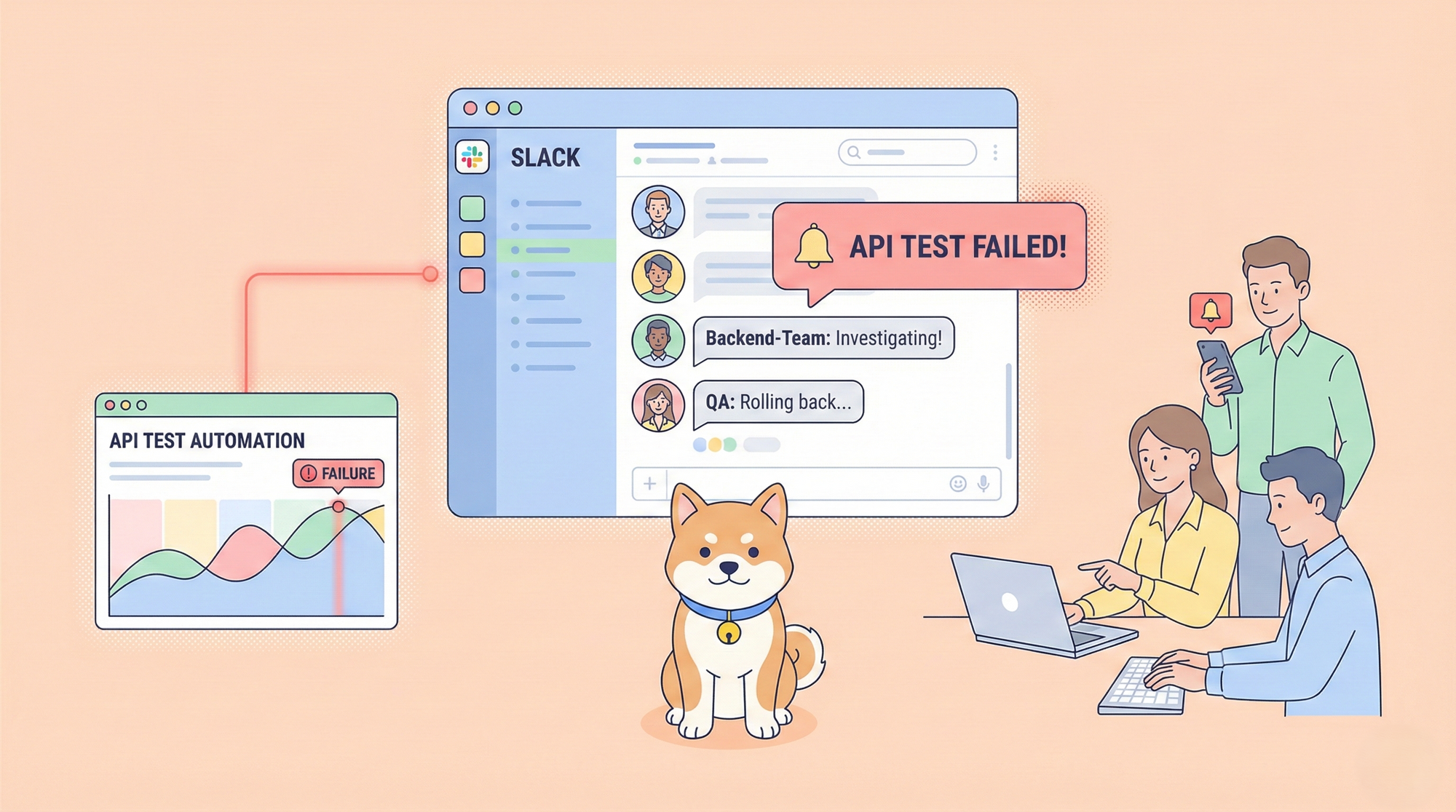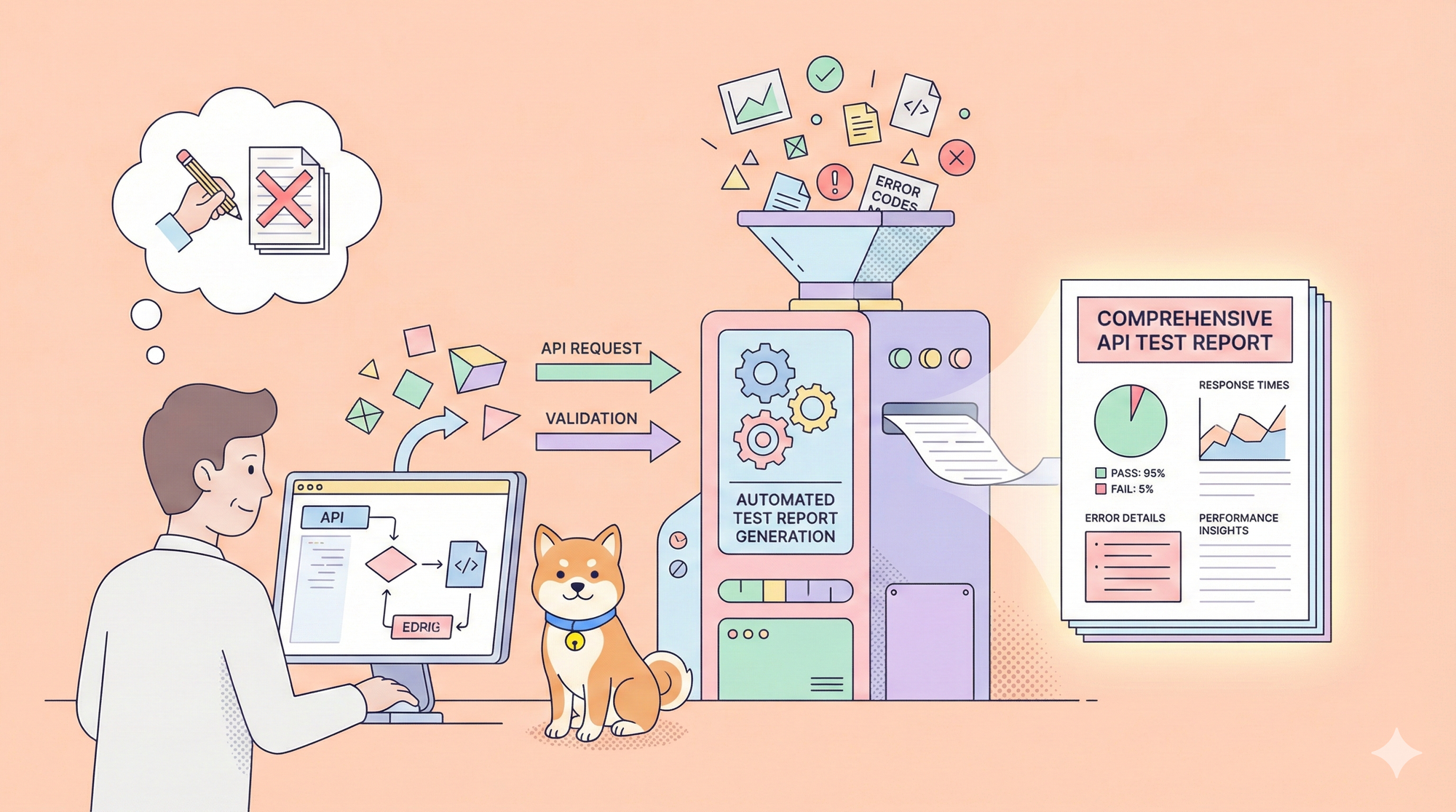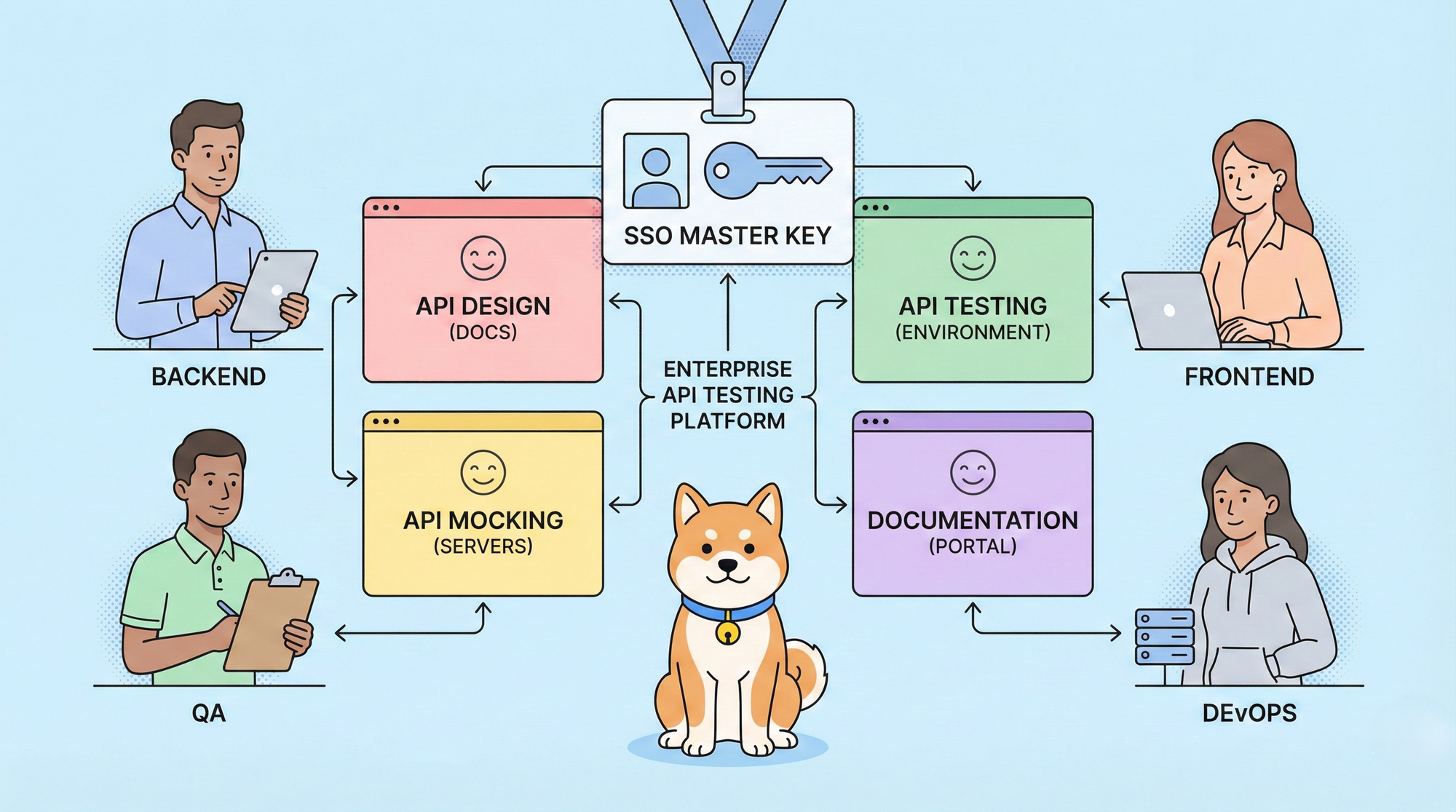Postman is an API development and testing platform that offers a variety of features. It allows developers to easily create and share API requests and collections, automate testing, mock APIs, and monitor performance. Postman also provides collaboration and documentation tools, enabling teams to work together more efficiently and communicate API behavior effectively. This article will provide a comprehensive tutorial to Postman, so let's get started.

What is Postman Used for?
Postman is a software application that allows developers to test, document, and share APIs (Application Programming Interfaces). Developers widely use it to simplify the process of testing APIs by providing a user-friendly interface for making requests, viewing responses, and debugging issues.
For those seeking a Postman alternative with additional free features, like robust API mocking and auto-generated API documentation, Apidog is an excellent option, as it is designed as a powerful API development tool that connects everyone involved in the API development process. G2 has also recognized Apidog as a top Postman alternative. It offers an all-in-one workspace for API design, mocking, testing, debugging and documentation.
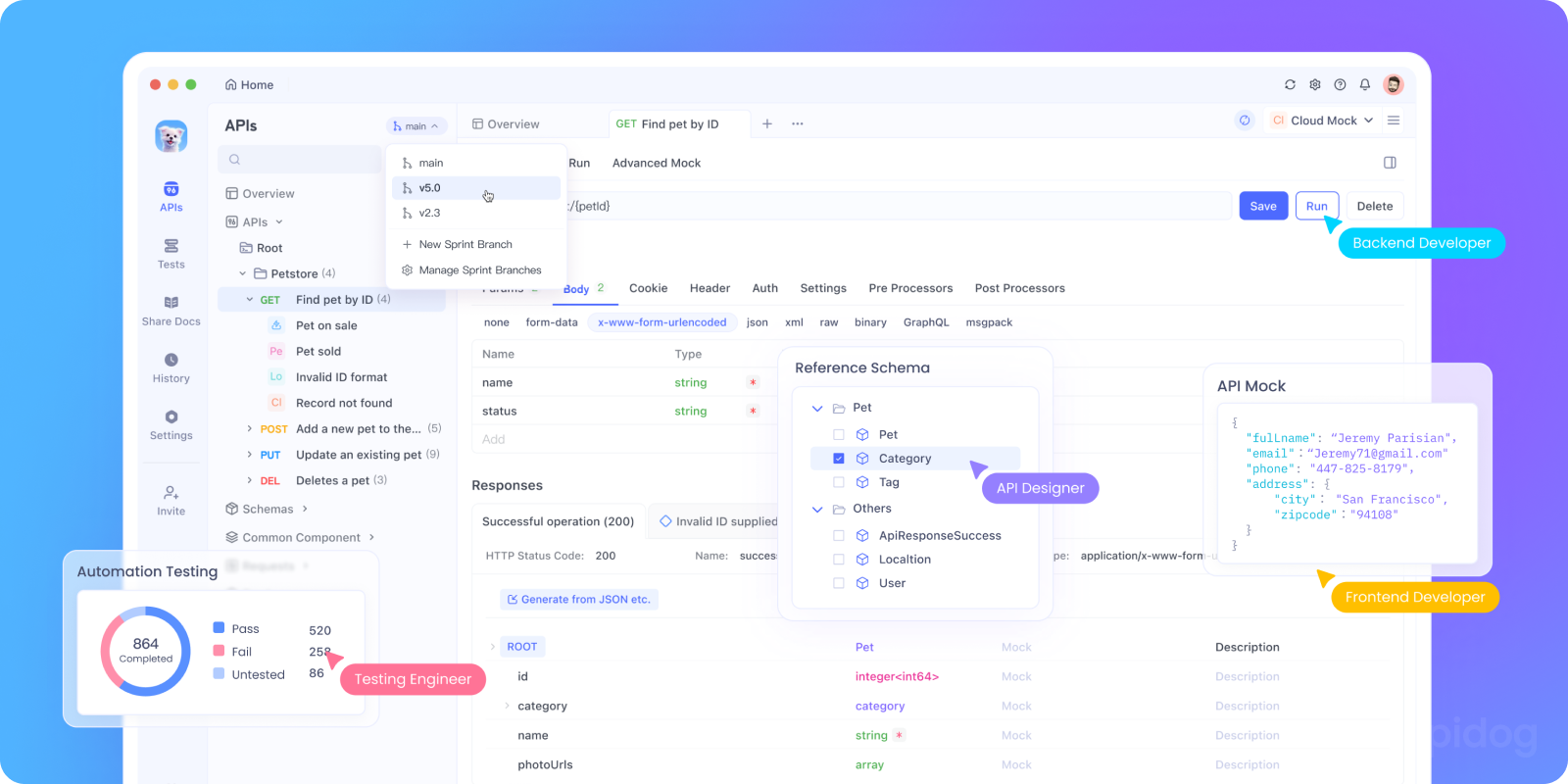
Feature Comparison Between Apidog VS Postman
Feature | Postman | Apidog |
API Designing | Design APIs visually | Design APIs visually |
Define and reuse schemas | ||
Generate API specification from the request | ||
Recognize JSON/XML/SQL to schema | ||
API Debugging | Pre/Post-request Scripts | Pre/Post-request Scripts |
Response validation | ||
Connect to databases | ||
API Testing | CI/CD | CI/CD |
Run collections:25/month | Run collections: Unlimited | |
Online test report | ||
Add assertions visually | ||
API Documentation | Custom domain | Custom domain |
Custom documentation layout | ||
Markdown pages | ||
Automatic generation | ||
Synchronization Update | ||
API Mock | Fixed response mocking | Fixed response mocking |
Smart mock engine | ||
Cloud mock server | ||
Customized mocking scripts | ||
Mock server for load testing | ||
Collaboration | Free for 3 users | Free for 4 users |
There is no doubt that Apidog is a powerful collaboration tool. Although Postman is more complete in terms of navigation etc. Here is a detailed description of the features of both.
The Main Features of Postman
1. API Designing
Postman provides a powerful visual editor to help you design APIs with ease and efficiency. With its intuitive user interface, you can create API endpoints and set their parameters, request, and response payloads, and authentication settings. The visual editor also allows you to document your API with clear and concise descriptions, making it easy for other developers to understand and use your API.
2. API Debugging
Postman offers pre and post-request scripts that allow you to customize your requests and automate certain tasks. Pre-request scripts can be used to set dynamic variables, headers, and parameters, while post-request scripts can be used to perform actions based on the response of the API. With these scripts, you can streamline your workflow and quickly identify and fix any issues with your API.
3. API Testing
Postman provides a comprehensive set of features to help you test your API and ensure that it meets the required standards. With automated testing, you can easily set up continuous integration and continuous delivery (CI/CD) workflows, allowing you to test your API at every stage of development.
It also provides a range of testing tools, including unit tests, integration tests, and load tests, to ensure that your API performs as expected under various conditions. With these tools, you can ensure that your API is reliable, secure, and scalable.

Postman Plans and Pricing
Postman offers both free and paid plans. The free plan includes essential features such as up to 1000 monthly API requests, creating and managing collections, limited mock servers, monitoring, and workspaces. The paid plans offer enhanced capabilities, including higher API request limits, advanced collaboration tools, increased mock server and monitoring capacities, advanced security features, and more integration options. The paid plans range from $14 per user per month to $49 per user per month, depending on the features required.
| Plans | Free | Basic | Professional | Enterprise |
|---|---|---|---|---|
| Price | $0 | $14 per user/month | $29 per user/month | $49 per user/month |
| Pros | Start designing, developing, and testing APIs. Free for 3 users | Collaborate with your team to design, develop, and test APIs faster. | Centrally manage the entire API workflow. | Securely manage, organize, and accelerate API-first development at scale. |
Drawbacks of Postman
Postman is a popular tool used by developers for API testing and development, but like any tool, it also has its drawbacks. Here are some of the potential drawbacks of Postman:
- Learning Curve: While Postman is relatively easy to use, it can take some time to learn how to use it effectively. This can be especially true for beginners new to API development and testing.
- Limited Features in Free Version: Postman offers a free version, but it has some limitations. For example, the free version only allows for a limited number of API calls per month and doesn't include some advanced features like team collaboration and additional mocks.
- Dependence on a Third-Party Tool: Postman is a third-party tool, so developers may become overly reliant on it and not develop a strong understanding of APIs and other development tools.
In conclusion, Postman is a powerful API development and testing software that offers a range of features to simplify the process of working with APIs. But it also has limitations. The cost of the paid version may be a concern for some developers or organizations. As for this, we highly recommend Apidog.
The Main Features of Apidog
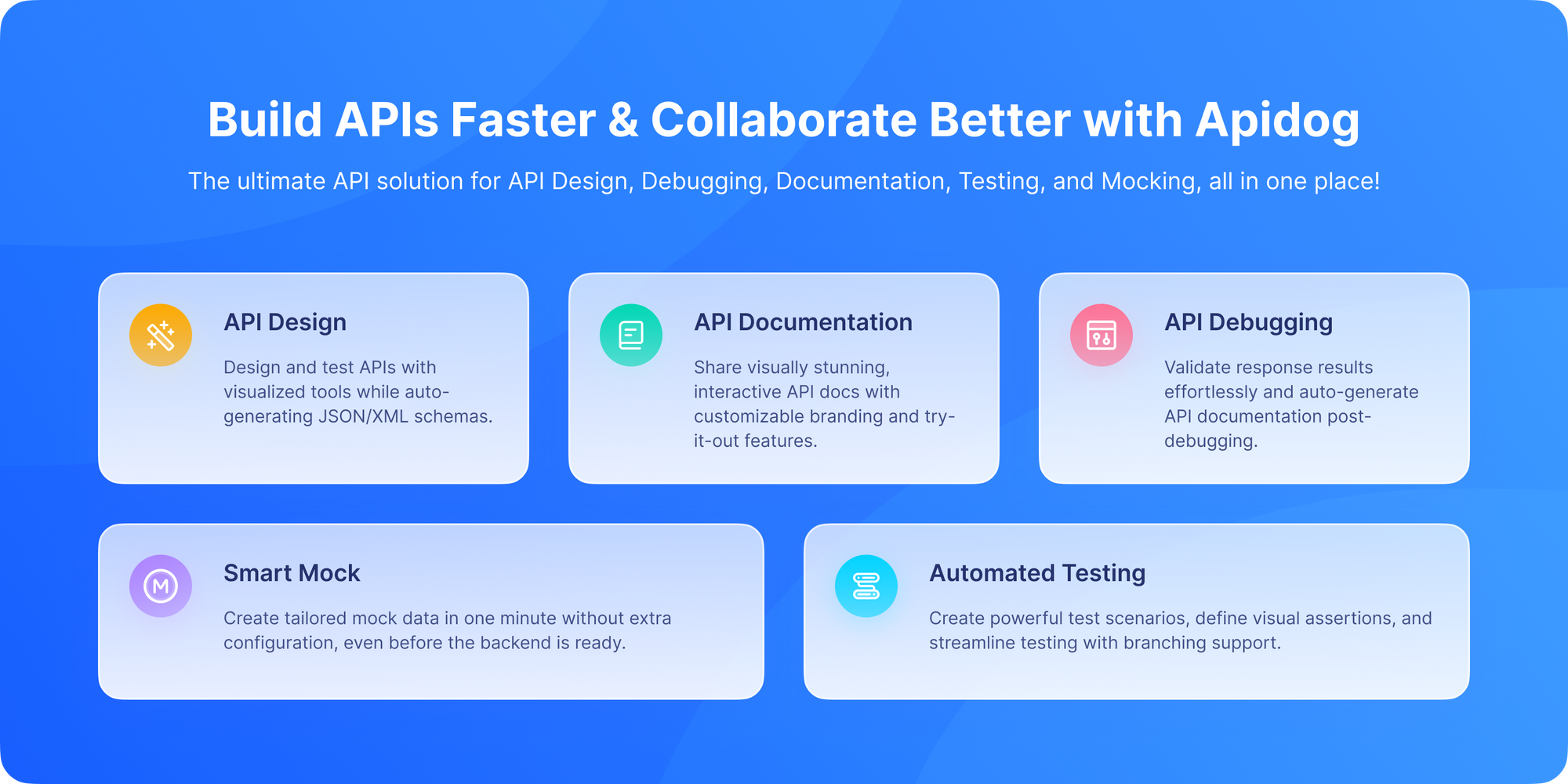
1. API Designing
Apidog's robust visual editor streamlines the process of designing APIs. It supports schemas for requests and responses and recognizes JSON, XML, and SQL data structures in request and response definitions. You can define and reuse schemas compliant with the OpenAPI Specification and generate response examples with a single click.
2. API Debugging
Apidog enables you to send various types of HTTP requests during API design and automatically generates request parameters from dynamic values. Responses are verified against the API definition as requests are sent. By connecting to databases, you can debug data persistence and retrieval issues effectively.
3. API Testing
With Continuous Integration/Continuous Delivery (CI/CD), Apidog ensures your API is tested automatically and consistently throughout the development cycle. Assertions validate the API's responses, and visually adding these assertions simplifies the testing process. Online test reports provide visibility into the testing process, making it easier to identify and resolve issues.
4. API Documentation
Apidog automatically generates documentation and mock data without extra configuration, eliminating the need for scripts. Custom domains make API documentation more accessible and user-friendly. You can customize the layout of the documentation to enhance its visual appeal and navigation. Using Markdown to write API documentation simplifies the process and improves maintainability.
5. API Mock
API mocking simulates an API for testing or development purposes. Apidog's smart mock engine generates realistic responses based on the requests. The cloud mock server offers a reliable and scalable solution for mocking APIs.
6. Additional Features
- IDEA Plugin: Apidog supports an IDEA plugin, providing an integrated development environment for creating, testing, and debugging APIs.
- Collaboration: Apidog's collaboration features enable multiple developers to work on an API together seamlessly. Unlimited collaboration ensures teams can work without user or project constraints.
- Apidog MCP Server: Turn your API specs into live AI context inside Cursor/VS Code—generate code, update DTOs, and scaffold endpoints directly from cached, refreshable Apidog/OpenAPI docs, with simple MCP setup and optional on‑prem support.
- Apidog AI features: Ship cleaner APIs faster with built‑in AI for one‑click schema edits, smart field naming, endpoint compliance checks, and bulk test‑case generation—all integrated with mocking, debugging, and interactive docs.
Many developers are familiar with testing APIs using Postman, but Apidog offers a more effective and affordable solution, with nearly all features available for free on the Free plan.
After thorough testing, Apidog has proven to be the best alternative for Postman. Below are the detailed steps for using Apidog:
How to Test API with Apidog Step-by-Step

Step 1. Sign up for a free Apidog Account
Go to the Apidog website and sign up for a free account.

Step 2. Create a New Project
Click on the "+New Project" on the right and give your project a name and description.

Step 3. Add Your API
Click on the "New Endpoint" to create a new API by entering the endpoint URL and specifying the details.


Step 4. Create a New Test Scenario
In the Testing panel, click "+New Test Scenario", then provide a name and description for the test. Click "Continue" to proceed with designing the test scenario.


Step 5. Run Your Test
When finishing designing the test scenario, click on "Run" to run your test. Apidog will send requests to your API and run your test script to check for errors.

Step 6. View Your Test Results
After your test has finished, click on the "Results" tab to view your test results. You can see which tests passed and failed and view detailed logs of each test run.

That's it! Now that you have finished the API testing and got the test result, it is time to discover what's wrong and fix the issue immediately.
Pro tip: You can configure "Scheduled Tasks" to automatically run predefined automated test scenarios at specified times. This allows you to obtain task execution results and meet scheduled testing and regression requirements.

Conclusion
Apidog is the best alternative to Postman, offering developers a more comprehensive API testing experience. Its advanced features include creating custom test cases, generating reports, and performing load tests, giving developers more flexibility and power in their testing workflow. With its advanced features, Apidog offers developers a more comprehensive and powerful testing solution than Postman. So if you're looking for a tool that offers more flexibility, power, and collaboration capabilities, Apidog is worth considering as a replacement for Postman.


